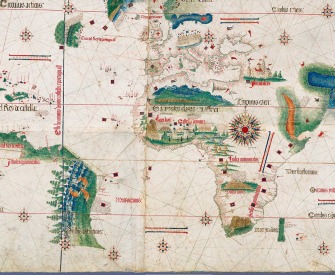There are an increasing number of excellent and well-produced history podcasts around. There’s a separate list of these under the Resources tab on the menu, and it’ll get added to over time. But for now, I just wanted to highlight a couple that have caught my ear over the last few weeks.
![]() First up are the podcasts from History Hit, the site started by Dan Snow. While to get access to all the features on the site you need to subscribe, the podcasts are free. There are four or five per week, and the coverage is very broad, perhaps with a bias to the UK, but plenty of world history coverage too. A recent one, for the UK, covered the recent discoveries at Stonehenge. At the beginning of July, a podcast looked at the 1918 Flu pandemic. The podcasts are nearly always with academics and authors who are experts in the subject. Recommended.
First up are the podcasts from History Hit, the site started by Dan Snow. While to get access to all the features on the site you need to subscribe, the podcasts are free. There are four or five per week, and the coverage is very broad, perhaps with a bias to the UK, but plenty of world history coverage too. A recent one, for the UK, covered the recent discoveries at Stonehenge. At the beginning of July, a podcast looked at the 1918 Flu pandemic. The podcasts are nearly always with academics and authors who are experts in the subject. Recommended.
 A second set of podcasts are from Malcolm Gladwell’s inevitably idiosyncratic series, Revisionist Histories. These are 30-40 minute pieces exploring so oddball corners of history. A recent episode was entitled The Bomber Mafia and describes how, on the eve of the Second World War, a band of visionaries at Maxwell Air Force Base tried to reimagine modern warfare. They failed. Part one on the extraordinary life of the Air Force General Curtis LeMay.
A second set of podcasts are from Malcolm Gladwell’s inevitably idiosyncratic series, Revisionist Histories. These are 30-40 minute pieces exploring so oddball corners of history. A recent episode was entitled The Bomber Mafia and describes how, on the eve of the Second World War, a band of visionaries at Maxwell Air Force Base tried to reimagine modern warfare. They failed. Part one on the extraordinary life of the Air Force General Curtis LeMay.



 In 1879, Thomas Edison (left) managed to produce the first usable incandescent electric light bulb. He did this on the back of patents he had purchased some years earlier from Henry Woodward and Matthew Evans, whose patent for the invention had been granted in 1875. What Edison managed to do was to create a filament that would burn for longer: 40 hours or so in its initial form. A year later he had a lightbulb that would last for 1200 hours. The growth in usage was initially slow, as with many such technologies: in 1885, around 300,000 light bulbs were in use, and by 1914, the US had around 85 million lamp sockets.
In 1879, Thomas Edison (left) managed to produce the first usable incandescent electric light bulb. He did this on the back of patents he had purchased some years earlier from Henry Woodward and Matthew Evans, whose patent for the invention had been granted in 1875. What Edison managed to do was to create a filament that would burn for longer: 40 hours or so in its initial form. A year later he had a lightbulb that would last for 1200 hours. The growth in usage was initially slow, as with many such technologies: in 1885, around 300,000 light bulbs were in use, and by 1914, the US had around 85 million lamp sockets.